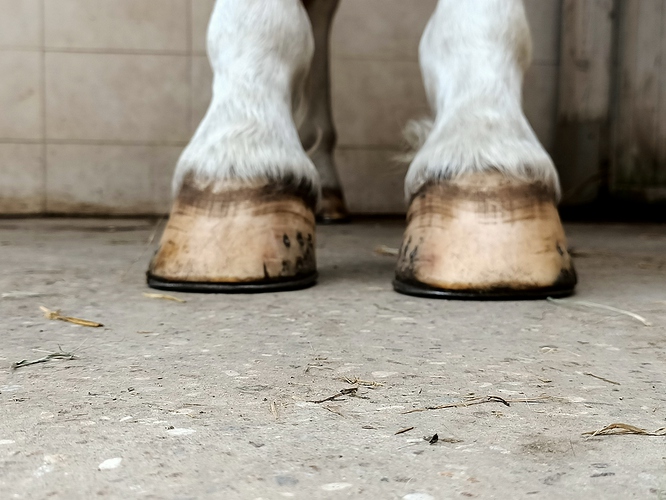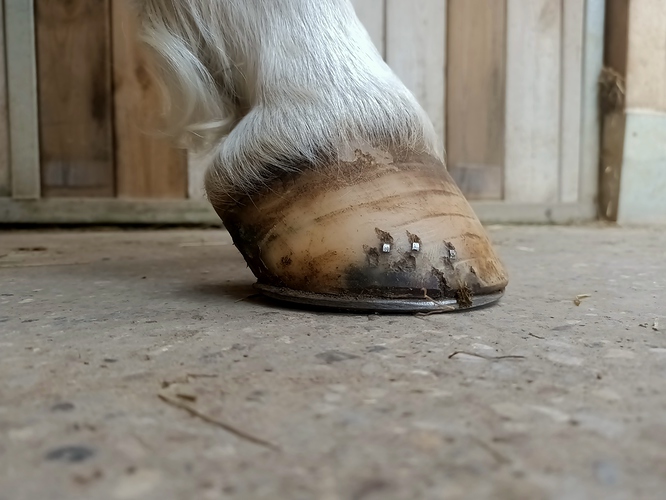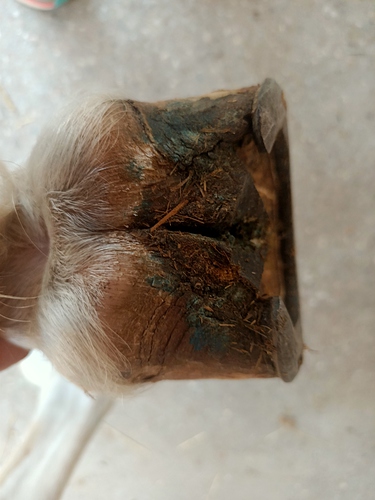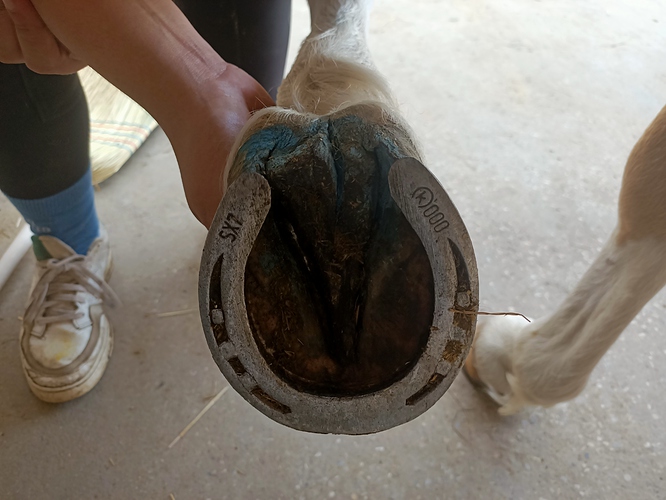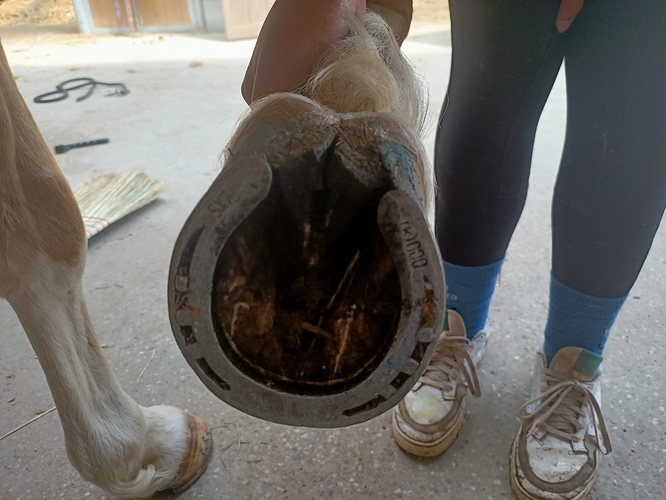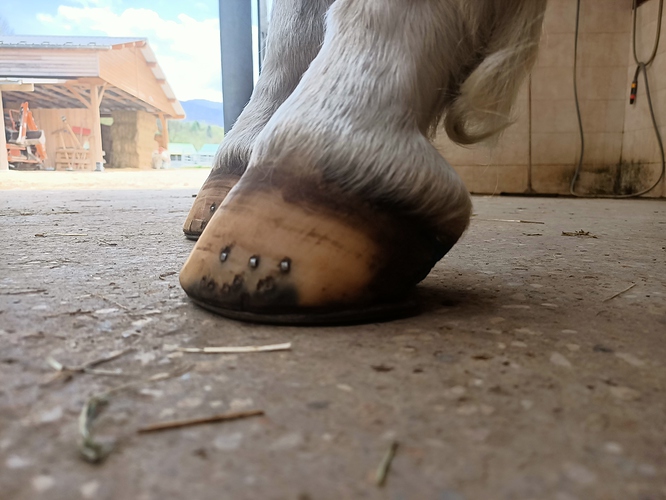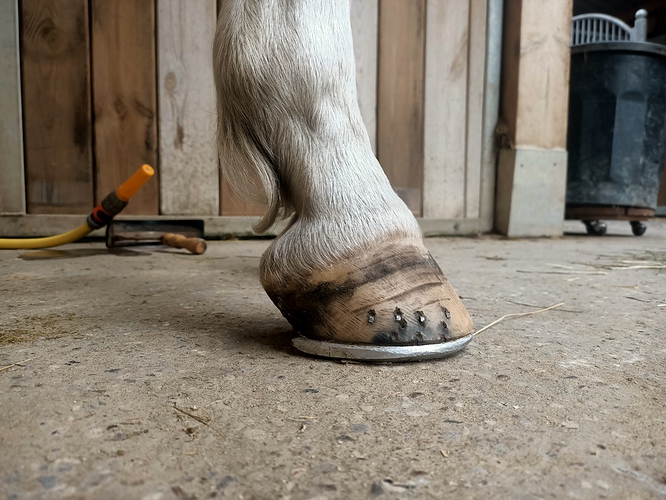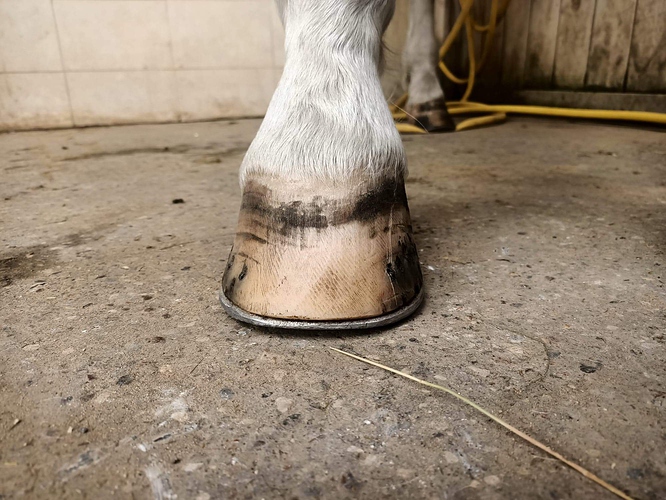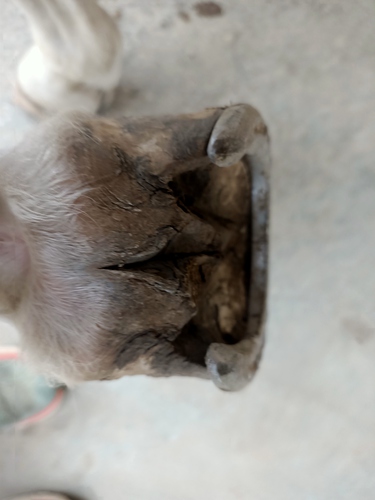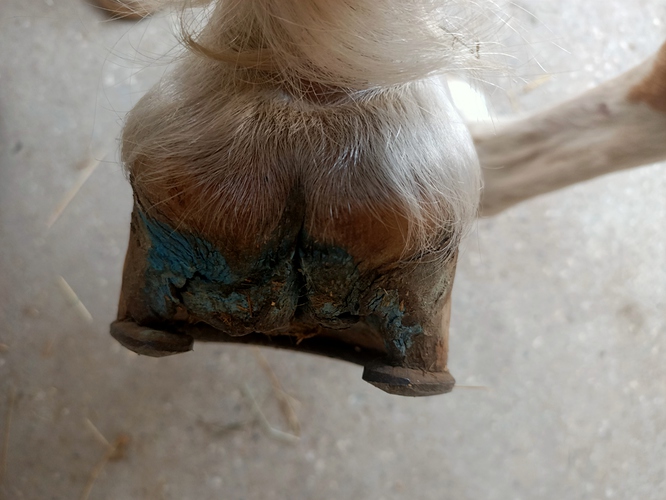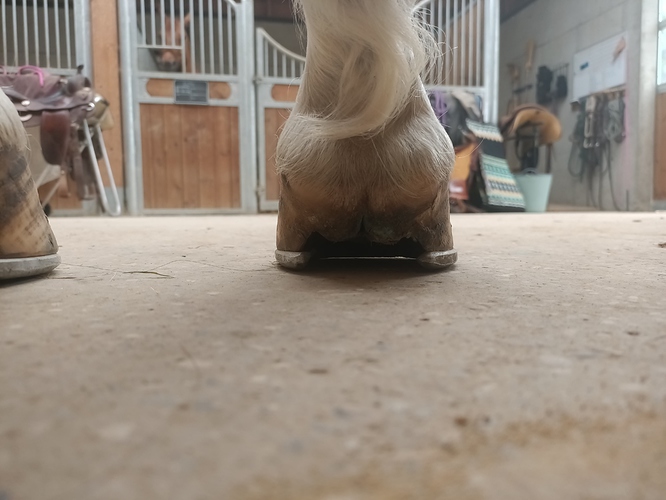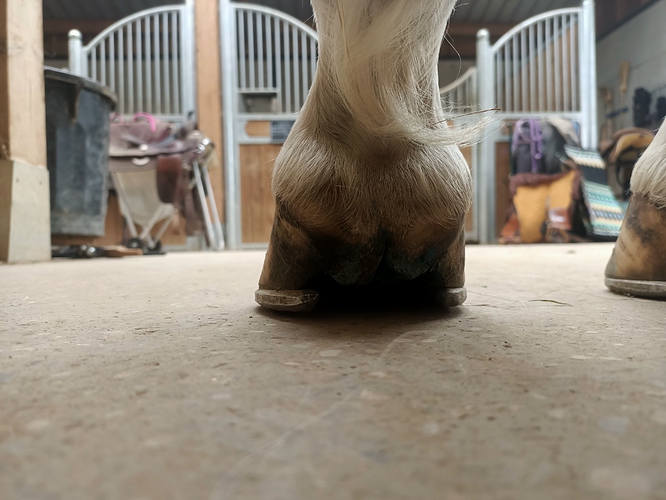If his parents are both 5 panel N/N, documented not just someone’s word, then he’s N/N by default, no need to test
His lateral xray shows a little bit of flattening of the P3 angle, and a resulting little broken back hoof-pastern angle. You can also see that the top of P3 (coffin bone) is farther from the hoof wall, than the tip even if just by a little. That says that the bone is shifting backwards, forcing the toe closer to the wall. Continue on like that and you will get a 0* angle, and eventually a negative angle.
I look forward to new pictures of the outside of the feet 

